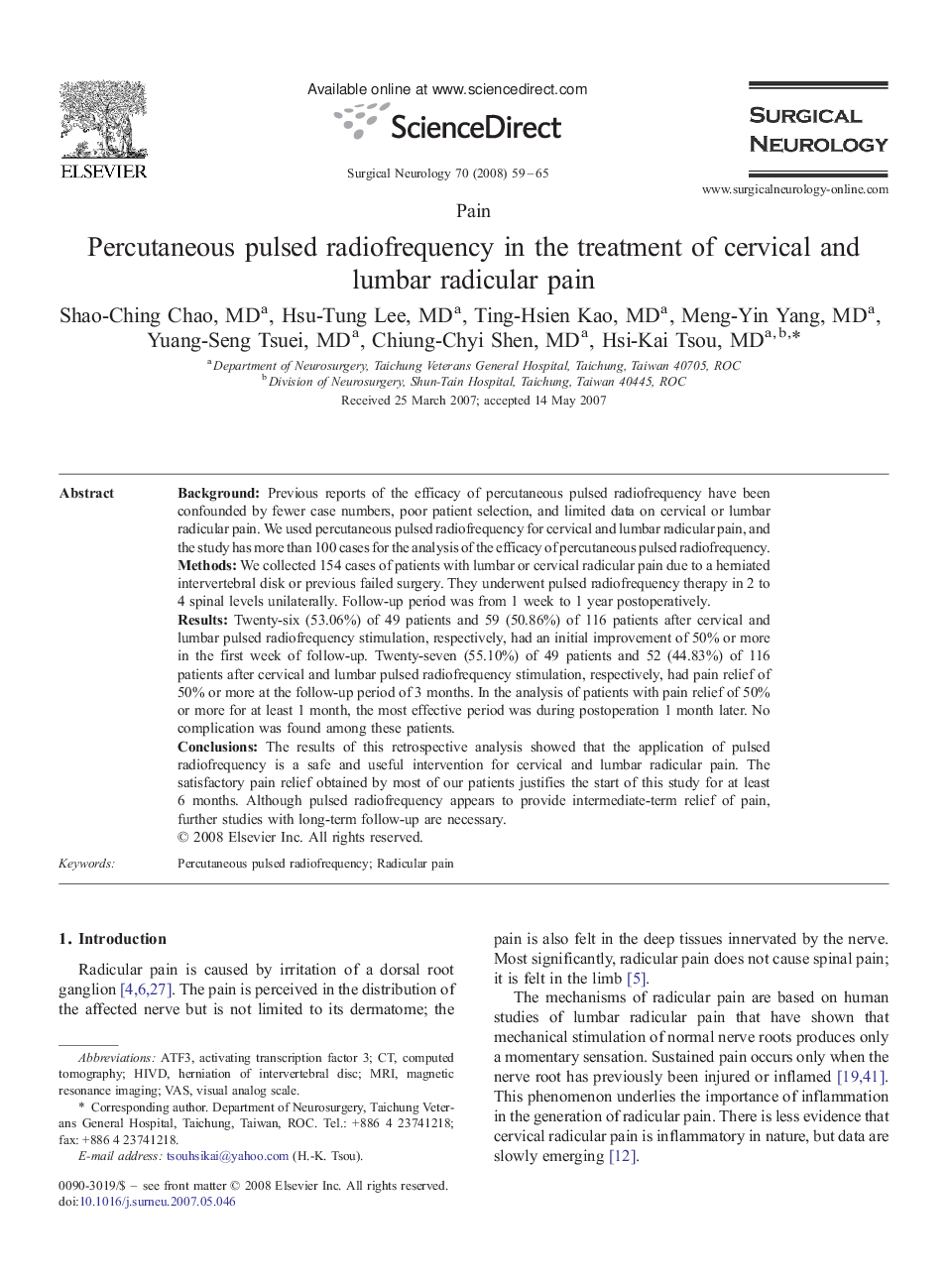| Article ID | Journal | Published Year | Pages | File Type |
|---|---|---|---|---|
| 3092817 | Surgical Neurology | 2008 | 7 Pages |
BackgroundPrevious reports of the efficacy of percutaneous pulsed radiofrequency have been confounded by fewer case numbers, poor patient selection, and limited data on cervical or lumbar radicular pain. We used percutaneous pulsed radiofrequency for cervical and lumbar radicular pain, and the study has more than 100 cases for the analysis of the efficacy of percutaneous pulsed radiofrequency.MethodsWe collected 154 cases of patients with lumbar or cervical radicular pain due to a herniated intervertebral disk or previous failed surgery. They underwent pulsed radiofrequency therapy in 2 to 4 spinal levels unilaterally. Follow-up period was from 1 week to 1 year postoperatively.ResultsTwenty-six (53.06%) of 49 patients and 59 (50.86%) of 116 patients after cervical and lumbar pulsed radiofrequency stimulation, respectively, had an initial improvement of 50% or more in the first week of follow-up. Twenty-seven (55.10%) of 49 patients and 52 (44.83%) of 116 patients after cervical and lumbar pulsed radiofrequency stimulation, respectively, had pain relief of 50% or more at the follow-up period of 3 months. In the analysis of patients with pain relief of 50% or more for at least 1 month, the most effective period was during postoperation 1 month later. No complication was found among these patients.ConclusionsThe results of this retrospective analysis showed that the application of pulsed radiofrequency is a safe and useful intervention for cervical and lumbar radicular pain. The satisfactory pain relief obtained by most of our patients justifies the start of this study for at least 6 months. Although pulsed radiofrequency appears to provide intermediate-term relief of pain, further studies with long-term follow-up are necessary.
